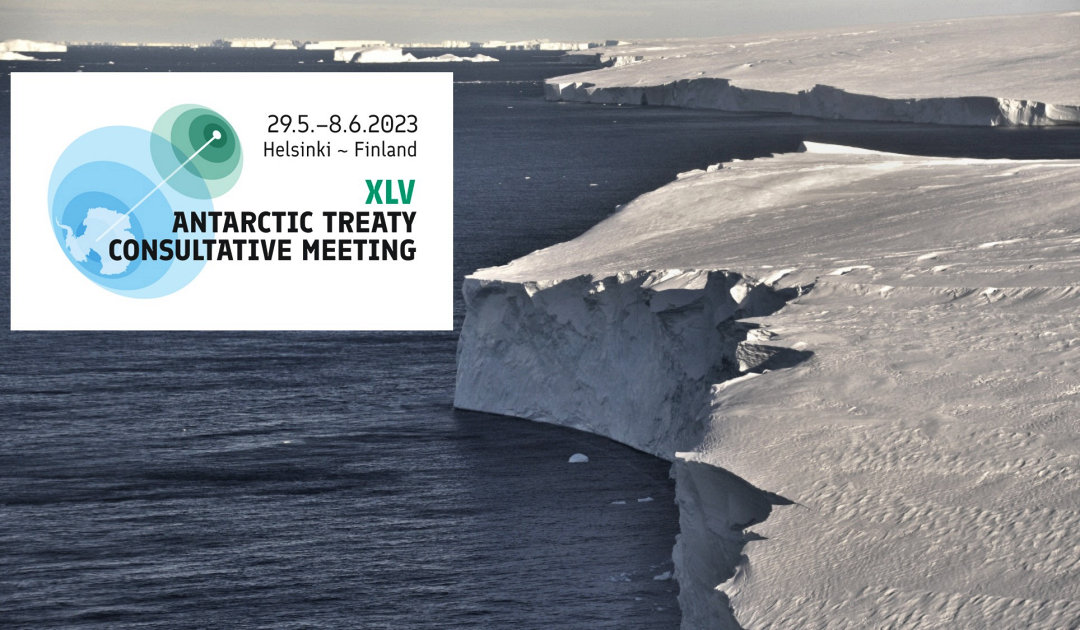
Small islands and low-lying countries that are threatened by sea level rise are currently attending the Antarctic Treaty Consultative Meeting in Helsinki to call for immediate action to avert a pending disaster
Representatives of non-Antarctic Treaty countries such as Mexico are in Helsinki until 8 June for the annual meeting of the consultative parties to the Antarctic Treaty (ATCM). These countries are not signatories to the treaty, but have shown up to stress their concern about the impacts of increasingly rapid climate warming on the Antarctic ice sheet and the consequences of its melting ice for low-lying and small island countries.
“An increasing number of studies of growing sophistication published in the past year are converging on temperatures between 1.5°C and 1.8°C as critical thresholds of irreversible loss of portions of the ice sheet, especially the West Antarctic Ice Sheet, but also portions of East Antarctica,” said Lydie Lescarmontier, the Antarctica director of the International Cryosphere Climate Initiative. The West Antarctic Ice Sheet (WAIS) alone holds four meters of potential sea-level rise, enough to wipe out vital coastlines in many low-lying countries, according to Dr Lescarmontier.

The annual ATCM is hosted on a rotating basis by one of the 27 consultative members and attended by the consultative parties to the Antarctic Treaty, which conduct significant research there. The meetings traditionally focus on research co-operation and the management of human activities in connection with protecting Antarctic biodiversity and ecosystems.
Until now, climate change has been discussed mainly in terms of impacts within Antarctica and on the Southern Ocean. However, there is a growing awareness that the greatest human consequences of climate changes affecting the Antarctic will be felt not by the small research and tourism communities active on the continent but by vulnerable millions living in low-lying countries and regions around the globe.
For the first time since the signing of the Antarctic Treaty in 1961, one whole day of the 12-day meeting will be devoted to climate action. The Finnish government has organised an unusual joint plenary of the ATCM and its related scientific body, the Committee for Environmental Protection, to discuss the challenges posed by climate change. On the eve of Climate Action Day, the Ambition on Melting Ice (AMI) High-Level Group on Sea-Level Rise and Mountain Water Resources, created by a diverse group of 20 ministers at COP27 in Egypt last year, is inviting delegates and interested parties to hear leading scientists, including Tim Naish, the IPCC lead author and co-lead for the Scientific Committee on Antarctic Research (Scar) Instabilities and Thresholds in Antarctica (Instant) Programme on future sea-level rise from Antarctica, discuss these important and looming thresholds

The World Meteorological Organization, which Dr Naish will represent at the Helsinki meeting, announced this week that it will elevate the cryosphere to one of its top priorities, given the increasing impacts of diminishing sea ice, melting glaciers, ice sheets, permafrost and snow on sea level rise, water-related hazards and water security, economies and ecosystems.
Dr Lescarmontier will present the latest information on the global consequences of the related key issue of acidification of the Southern Ocean, which has major consequences for fisheries and food security. “Atmospheric CO2 concentrations of 450ppm have long been identified as a serious threshold for these changes, which will last 30 to 70,000 years,” she said. “Our current growth in CO2 will have us passing this level in just 11 years.”
Protecting the cryosphere through vigorous climate action is not a matter for mountain and polar nations alone: it is a matter of urgent global concern, because the greatest impacts on human communities lie well outside these regions
Ambition on Ice
AMI includes not only polar and mountain countries, but others far distant that would be disastrously affected by sea-level rise or loss of water resources from glaciers and snow. Mexico, for example will be deeply impacted by Antarctic ice sheet loss: much of the Yucatan Peninsula coast, including two Unesco World Heritage sites and the tourist region of Cancún, would be wiped out if the WAIS was to melt completely. Monrovia, the capital of Liberia, would disappear if sea levels rose by two metres. AMI members Vanuatu, Senegal and Tanzania would all have their coastlines rewritten if the WAIS collapsed.
“Protecting the cryosphere through vigorous climate action is not a matter for mountain and polar nations alone: it is a matter of urgent global concern, because the greatest impacts on human communities lie well outside these regions,” the AMI partners wrote in their declaration.
“It is a matter of international and inter-generational justice to keep this Antarctic ice frozen, surrounded by a healthy Southern Ocean,” said Dr Lescarmontier.” Although not a formal part of the Antarctic Treaty, global impacts from Antarctica represent a key message for ATCM governments, she added. “The aim is to raise the importance of Antarctica, to motivate emissions reductions consistent with the lower Paris Agreement limit of 1.5°C and with minimum overshoot, in order to avoid waking ever-greater portions of this sleeping giant.”

Dr Irene Quaile-Kersken of Ambition on Melting Ice and the International Cryosphere Climate Initiative
Featured image: Thwaites Glacier Front by David Vaughan
More about this topic





